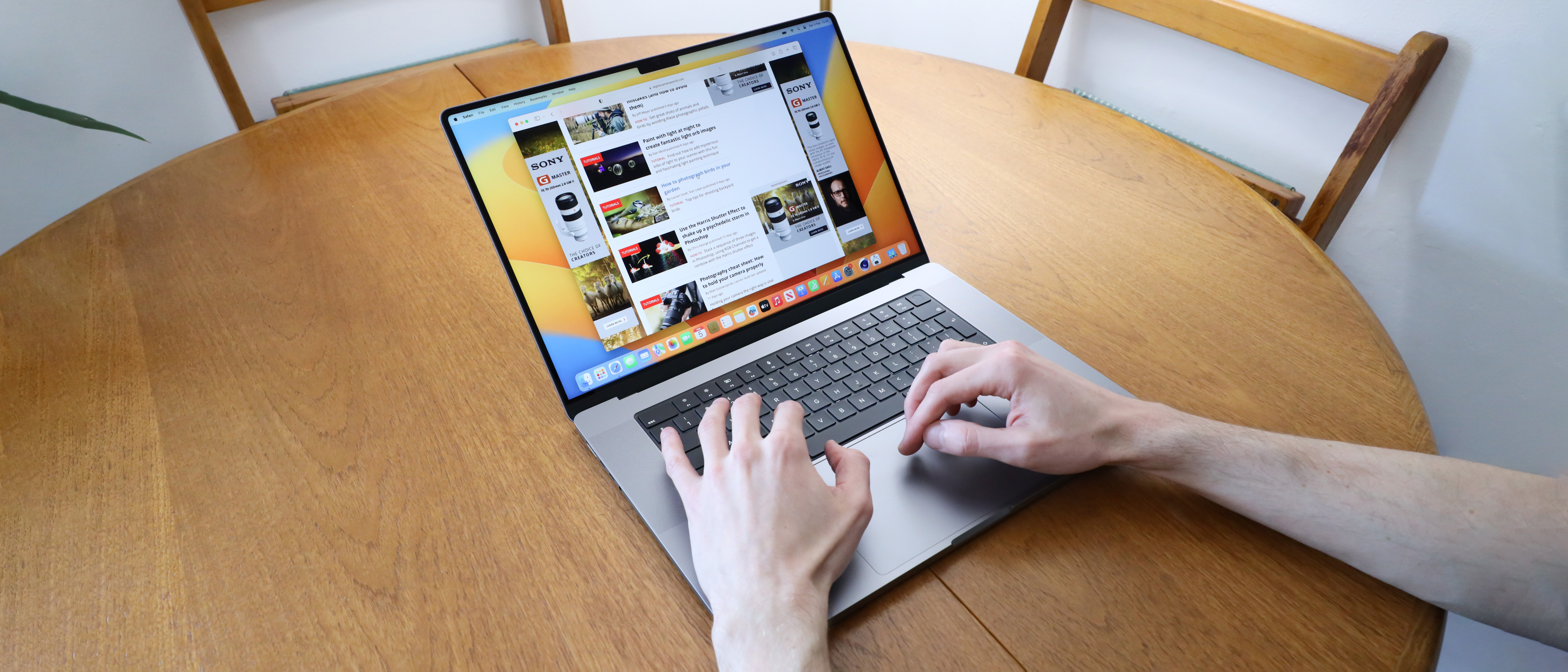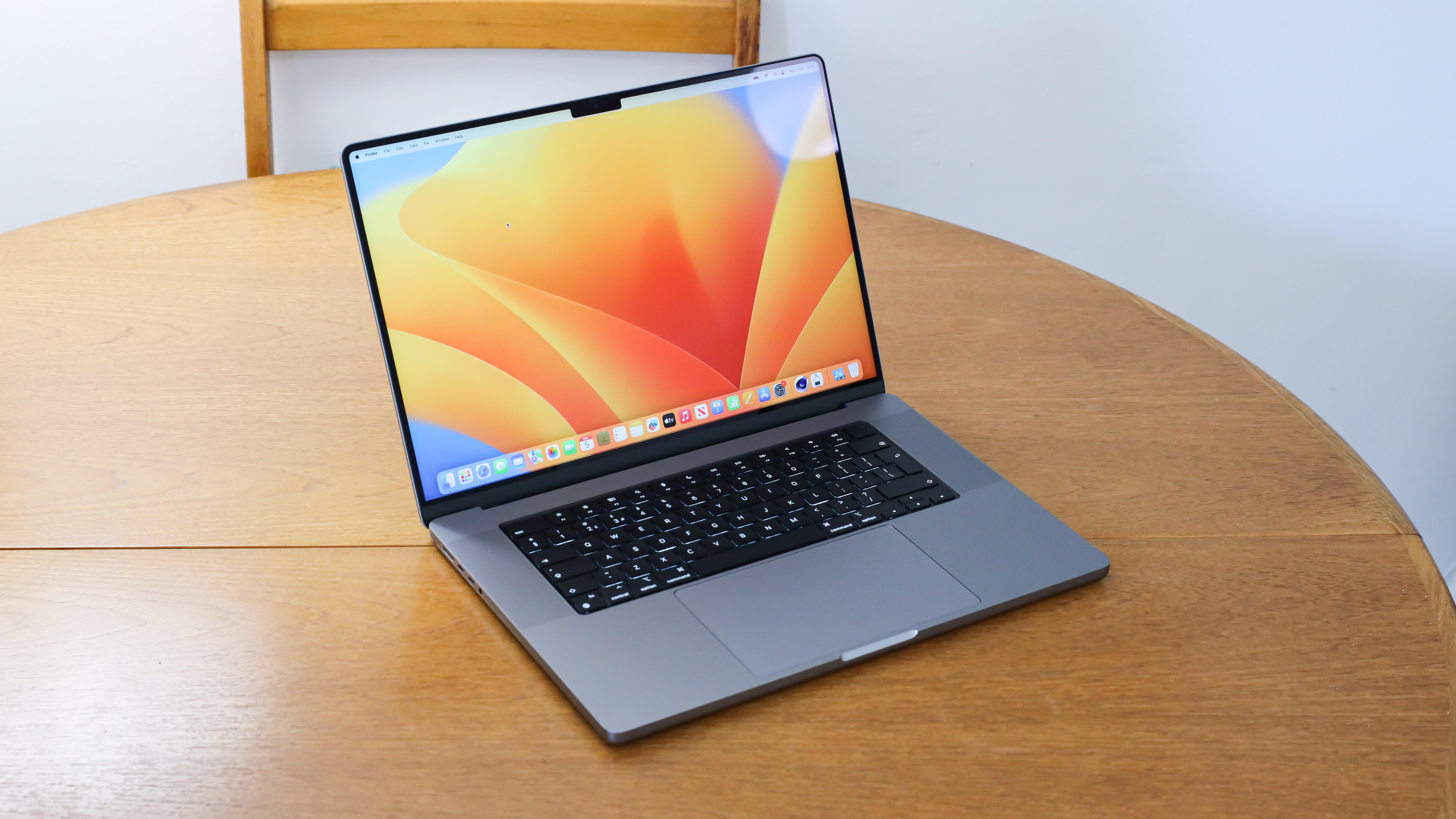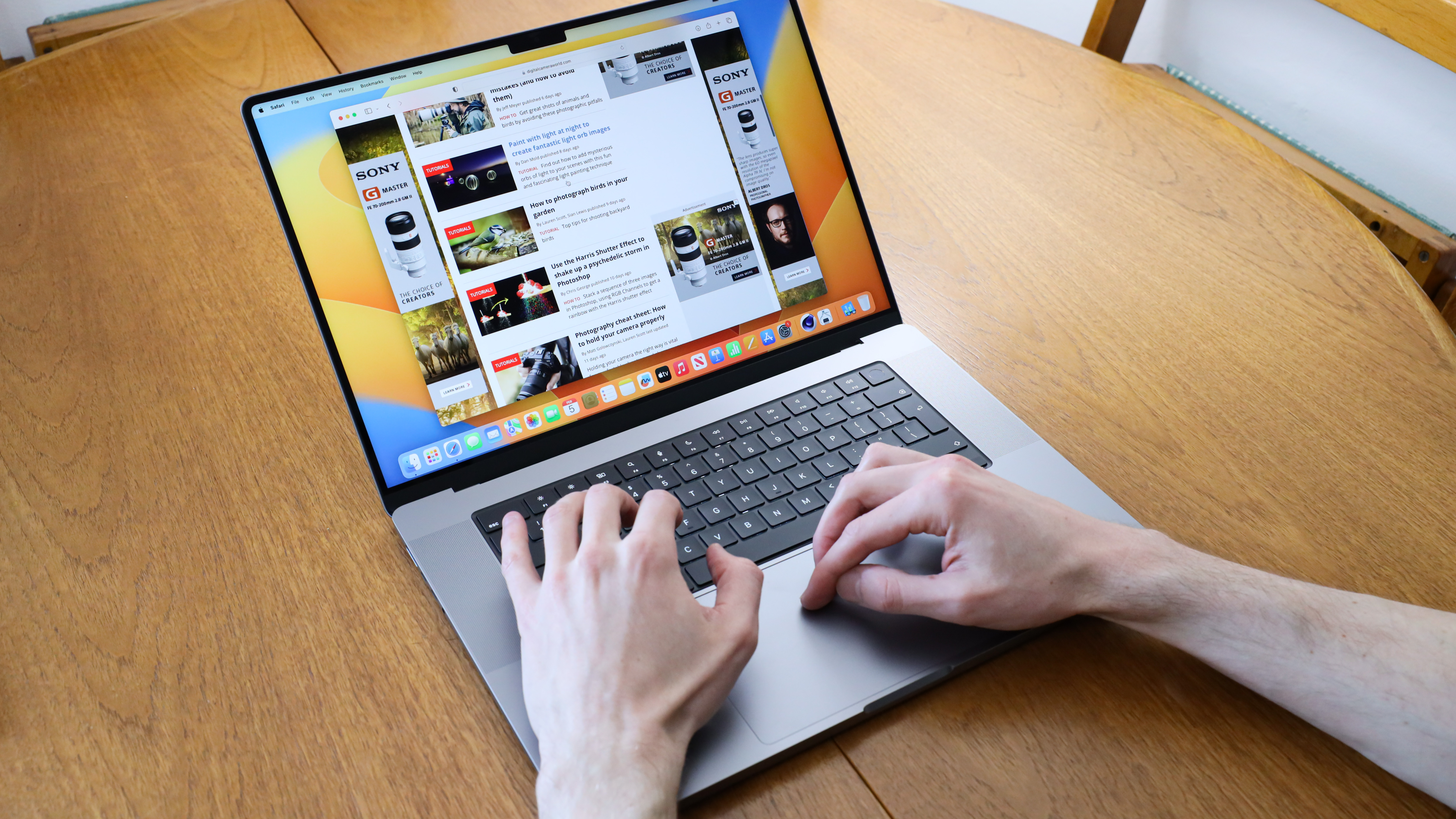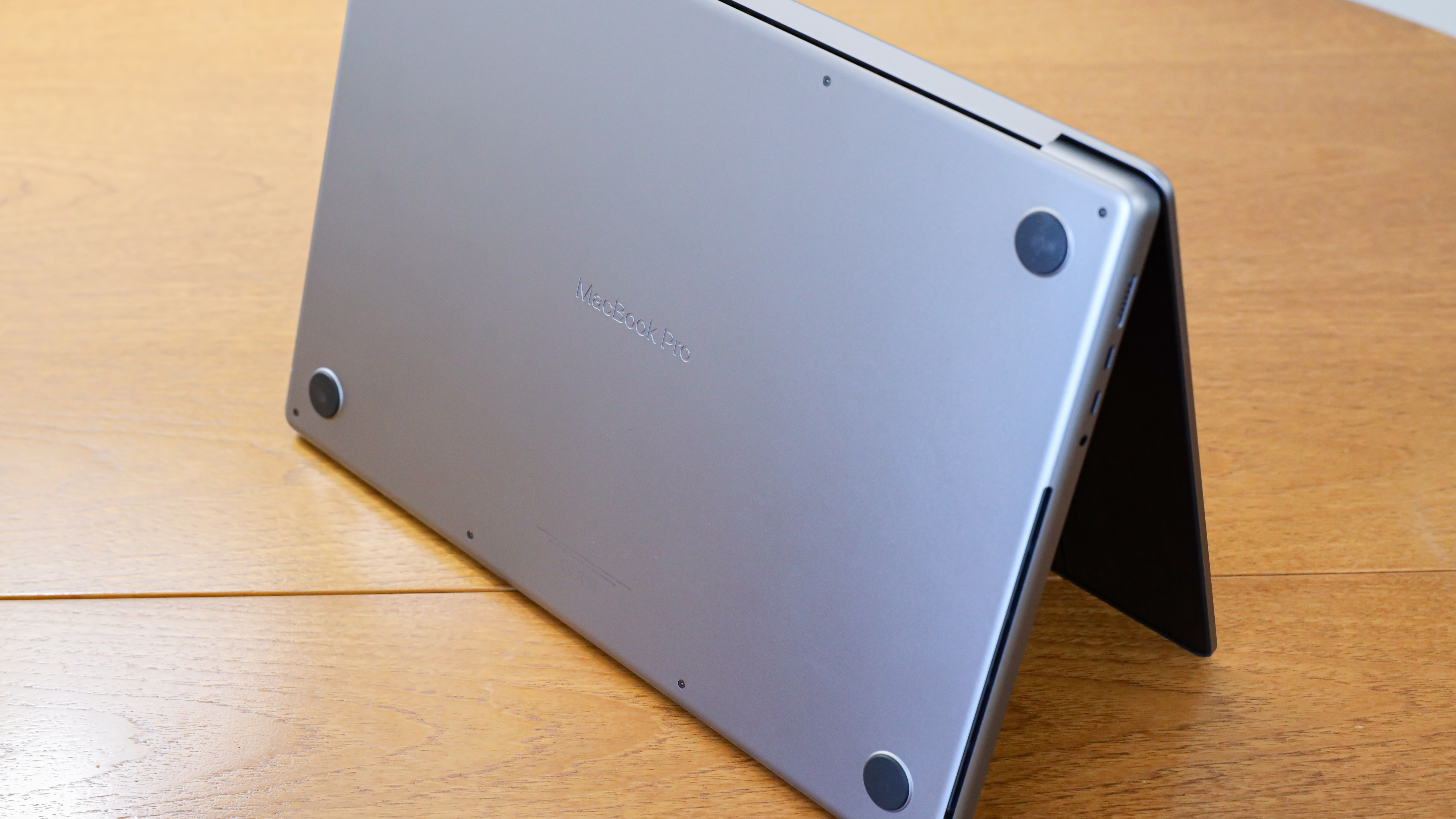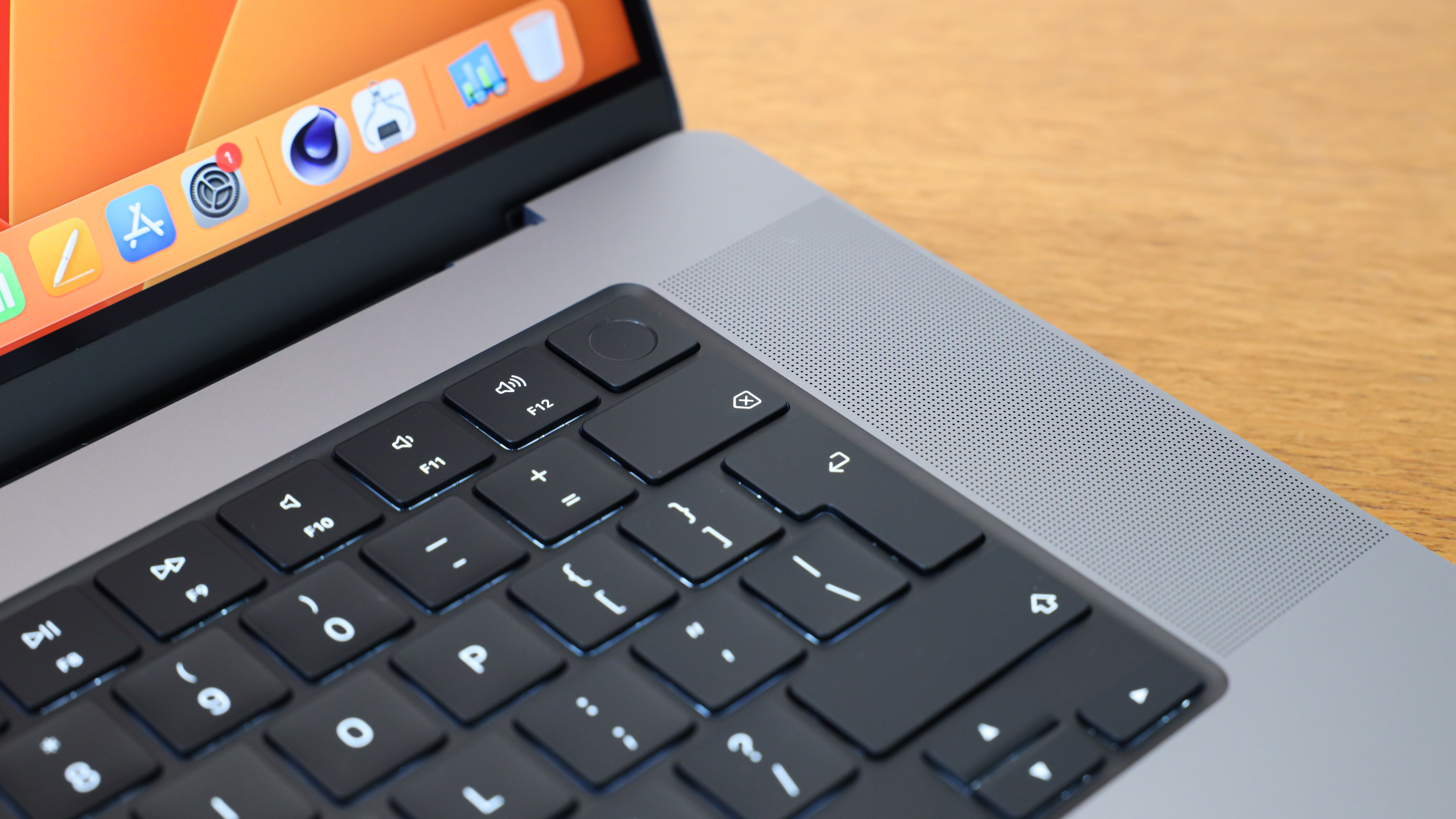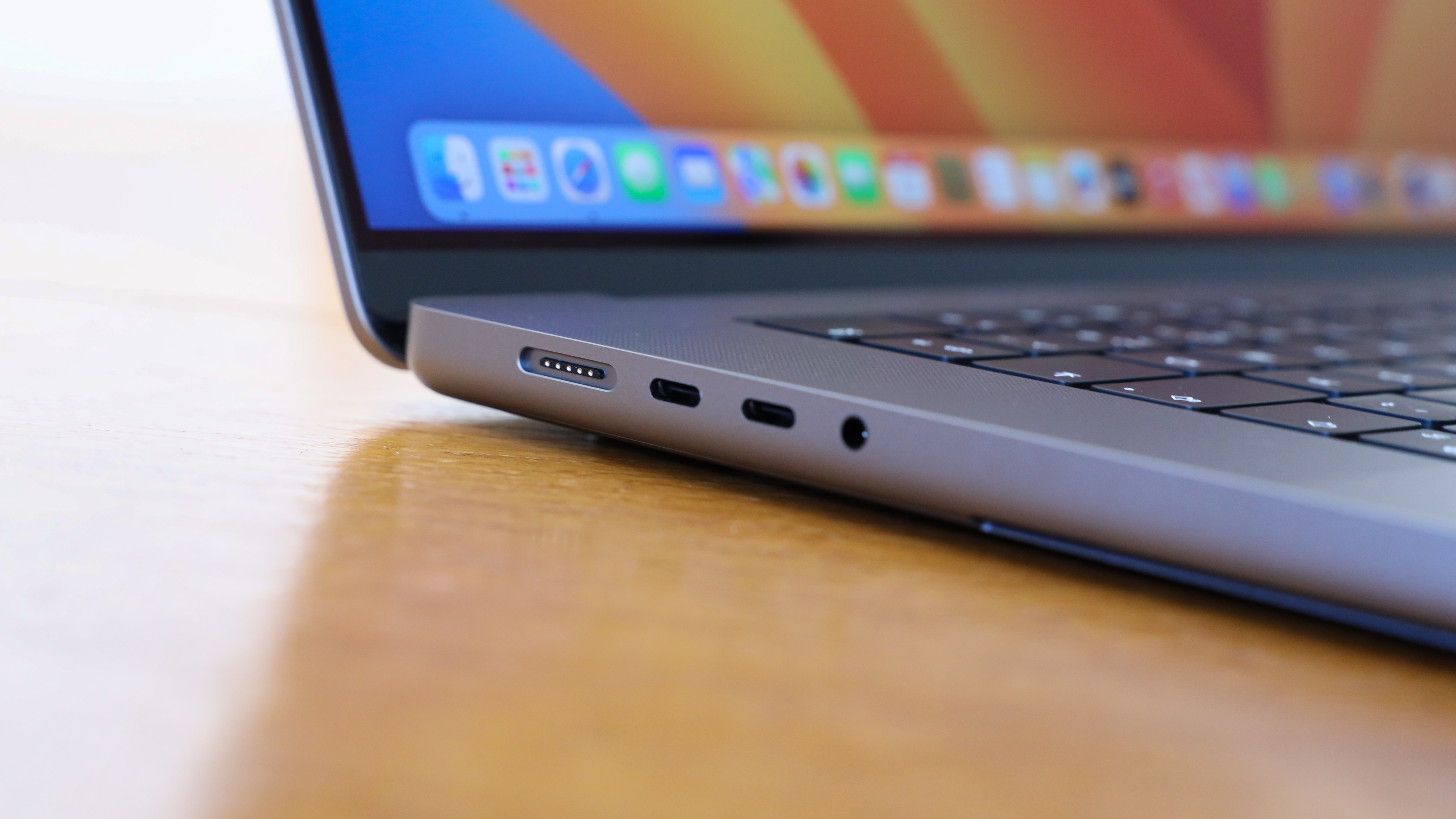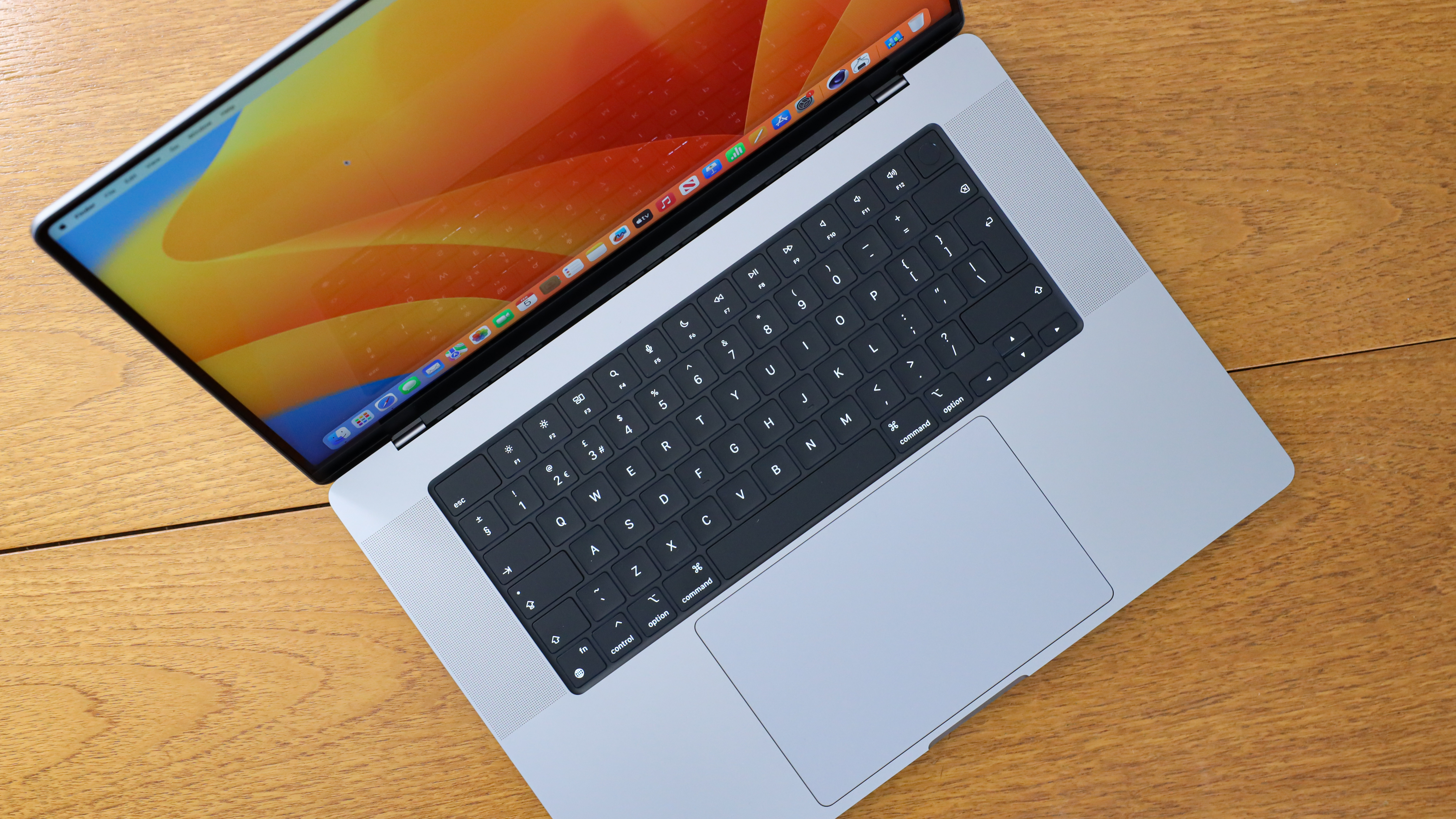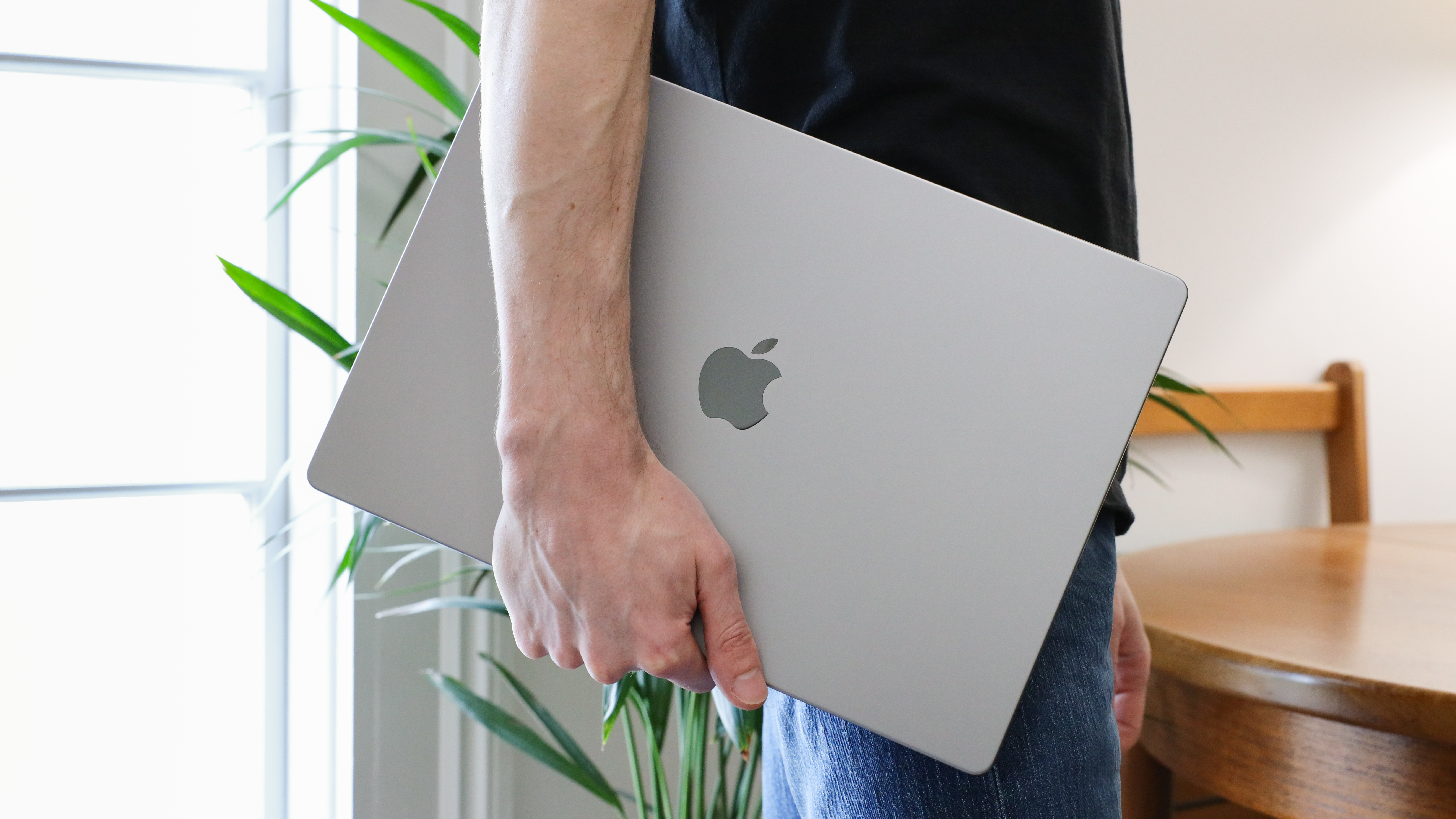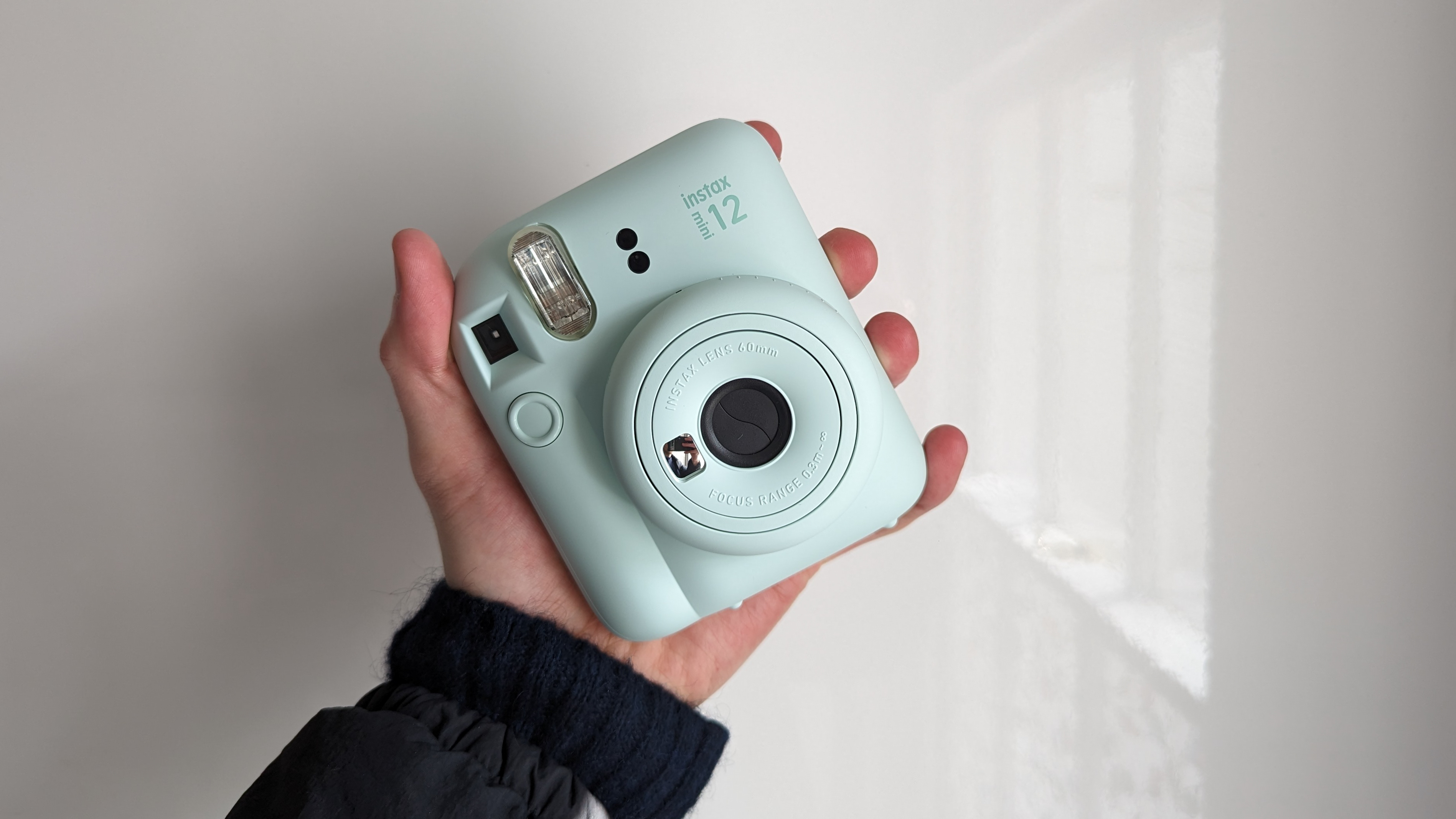Digital Camera World Verdict
The M2 Max processor is a revelation, offering huge quantities of raw power, especially when it comes to graphical work. However this comes at a price, a big one, with the M2 Max equipped MacBook Pro 16 being eyewateringly expensive and out of the price range of many consumers. However, the MacBook Pro 16 is a fantastic laptop, with a lot going for it from the beautiful color-accurate screen, booming speakers, sharp webcams, and excellent keyboard and trackpad.
Pros
- +
M2 Max is astonishing fast
- +
Some of the best speakers on a laptop
- +
Big beautiful color. Accurate screen
- +
SD card slot is a very welcome edition
Cons
- -
Very very expensive
- -
Notch isn't needed
- -
Chunkier shape feels bigger than previous 16-inch
Why you can trust Digital Camera World
Larger laptops with their increased screen size often make for the best photo-editing laptops and the best laptops for video editing. Apple's top entry in this category has for the past several years been the MacBook Pro 16 and now they are back with a refresh with an all-new and all-powerful chip.
Since its announcement in November 2020, with the M1 chip in the MacBook Air, MacBook Pro, and Mac Mini, Apple Silicon has been upending the world of computing, with its headline-grabbing speeds and efficiency due to its tight integration between hardware and software. Apple ditched Intel and moved on to a mobile architecture based on designs from ARM, this opened up its devices of all sizes to share one processor, and allow native iPhone apps to run on Mac.
As we saw in the first generation of Apple Silicon, the M1 Pro, and an M1 Max chips were big spec improvements on its base chips, aimed at creative professionals. Apple has repeated history with the new and improved versions of its second generation M2 chip – the M2 Pro and M2 Max. The latter of which will be tested out in this review in the latest MacBook Pro 16.
MacBook Pro 16 (2023) Specifications
Processor: Apple M2 Max chip with 12-core CPU and 38-core GPU
Configurable to: M2 Pro with 12-core CPU and 19-core GPU, Apple M2 Max with 12-core CPU and 30-core GPU
Screen: 16.2in Liquid Retina XDR display, 3456x2234 native resolution at 254 pixels per inch
Display Technology: 1,000,000:1 contrast ratio, 1,000 nits sustained brightness, 1 billion colors, Wide color (P3), True Tone technology, ProMotion 120Hz adaptive refresh rate
Memory: 32GB unified memory
Configurable to: 16GB (M2 Pro), 32GB (M2 Pro or M2 Max), 64GB (M2 Max), or 96GB (M2 Max with 38-core GPU)
Battery: 100wH battery, 140W MagSafe power adapter
SSD: 1TB
Configurable to: 512GB (M2 Pro), 2TB, 4TB, or 8TB (M2 Max)
Ports: SDXC card slot, HDMI port, 3.5mm headphone jack, MagSafe 3 port, 3x Thunderbolt 4 (USB-C) ports
Connections: WiFi 6E (802.11ax), Bluetooth 5.3
Size: 1.68 x 35.57 x 24.81 cm
Weight: 2.16 kg (M2 Max), 2.15kg (M2 Pro)
MacBook Pro 16 (2023) Key features
Apple has designed what it is calling the most powerful chip yet in its just over two-year-old endeavors into making its own in-house processors, and on paper, the M2 Max is a beast. Able to be configured up to an absolutely monstrous 38-core GPU, 96GB of unified memory, and 400GB/s memory bandwidth.
The Macbook Pro 16 can also be configured with a less powerful M2 Pro or M2 Max processor, sharing the same 12 CPU cores, but differing in graphical power, with the M2 Pro having a 19-core GPU or the M2 Max with a 30-core GPU option. The M2 Max has a base level of 32GB of unified memory, although there is the option to upgrade this all the way to 96GB of RAM, which is incredible, but more than almost anyone will need.
Apple claims that the new 16-inch M2 max can be up to 2.5x faster in photo editing in Adobe Photoshop and 6.5x faster in video editing in Final Cut Pro than the previous Intel i9 model with a Radeon Pro 5600M graphics card from AMD.
The best camera deals, reviews, product advice, and unmissable photography news, direct to your inbox!
The model I am testing here is the MacBook Pro 16 with M2 Max with a 12-core GPU, 38 graphics cores, and 32GM of RAM. This calibration currently is listed on Apple’s store for $3,499/£3,749.
The clue is in the name, the MacBook Pro 16 screen measures 16.2in, with a pixel count of 3456x2234 and a density of 254ppi. The screens use Apple's Liquid Retina XDR panels, which enable a much more comprehensive dynamic range and a broader range of colors. Each screen is color-calibrated at the factory for accurate color grading, photography, and design work. ProMotion, a technology found on the latest iPhone Pro models, boosts the screen refresh rate to 120Hz, making movement on the screen much more fluid and videos smoother.
After a very long time of Apple putting very sub-par webcams in its premium laptops, it has got the message, and the MacBook Pro 16 has a 1080p webcam and a studio-quality three-mic array. The Macbook Pro 16 is also equipped with a six-speaker setup that supports Dolby Atmos.
Port lovers everywhere will be thrilled that Apple has also decided to get go back on its all-USB-C designs. While the laptop still features 3 Thunderbolt 4 enabled USB-C ports, it also has a 3.5mm headphone jack, HDMI output, and for creatives everywhere, the MacBook Pro 16 has a full sizes SD card slot.
MacBook Pro 16 (2023) Build and handling
Apple overhauled the look of its top-end MacBook Pros last year, and it has stuck to those design principles in this year's iteration. Again, the laptop is an aluminum unibody design, although it differs from past generations by being much more rounded instead of wedge-shaped.
This makes the laptop look and feel considerably thicker and more substantial than the previous design of the MacBook Pro 16 from the Intel era. Although the design still looks and feels very nice, with premium finishes everywhere, it is just noticeably bulkier when placed next to the older 16-inch model.
Unsurprisingly for anyone who has used Apple's scissor-switch keyboard before, the keyboard on the new MacBook Pro 16 is excellent. Keys are really well spaced, and have a good amount of travel and spring to them, with the additional size of the chassis providing more wrist rest, this really is one of the best laptops to type on for long periods.
Banished hopefully forever is the touch bar, with the standard function keys of MacBooks past returning to the top row, which is a much better solution. The fingerprint reader and power button combo have remained, which has proved to be a very fast and easy method to sign in, and it hasn’t given me any rejections yet. It also has a larger key and indented center which makes finding the reader that much faster and easier.
The keyboard uses black keys on a painted black background, which looks pretty stylish, but I found in dimmer light or at quick glances I find it makes the keys harder to distinguish from one another. Backlighting helps, but the MacBook Pro 13 or MacBook Air’s body-colored borders around each key is much easier to see in a pinch.
It is still disappointing to not see Apple's FaceID make its way to its laptops, which arguably there is space for in the increased size of the MacBook Pro notch.
The notch at the top of the screen has proved pretty divisive, but it is still around. Other manufacturers such as Dell in their XPS 13 range of laptops have demonstrated that a webcam (and facial recognition system) can be squeezed into the tiniest of bezels, so it really does just feel like this MacBook Pro has a notch just because it is an Apple design 'thing'.
The return of the ports on MacBook Pros might be just as important as the new all-powerful processors. The MacBook Pro 16 still sports three Thunderbolt 4 capable USB-C slots, but the fourth port from previous devices has been replaced with a MagSafe magnetic connector for charging.
This makes sense to me as a heavy editor, I spend so much of my time with my MacBook connected to power that I always had a dedicated USB-C port for charging anyway. Those in a pinch (most likely forgot to pack their MagSafe charger) can also still charge the latest MacBooks with any USB-C charger, with varying results based on its power.
The addition of a 3.5mm headphone jack is a huge boon for audiophiles and audio editors, who want to connect headphones via a dedicated wire. And most exciting for content creators, in one of Apple's smartest moves, the MacBook Pro 16 welcomes back the full-sized SD card slot, which will free a lot of camera users from their dongle nightmares.
If a HDMI port is really necessary is up for debate, with USB-C becoming the default way to connect to most monitors while also powering them through the same cable, there are no specific benefits to HDMI. But it does offer a level of backward compatibility that I am sure some people will appreciate.
MacBook Pro 16 (2023) Performance
We ran a series of benchmarking tests on the new MacBook Pro 16 with M2 Max, the results of which you can find below:
| Header Cell - Column 0 | MacBook Pro 16 (M2 Max) | MacBook Pro 14 (M2 Pro) | MacBook Air (M2) | MacBook Pro 16 (Intel i7, AMD Radeon Pro 5300M) |
|---|---|---|---|---|
| GeekBench 5 Single-core CPU score | 2,078 | 1,974 | 1,936 | 1,261 |
| GeekBench 5 Multi-core CPU score | 15,236 | 14,831 | 8,917 | 4,982 |
| GeekBench 5 OpenCL score | 72,558 | 45,922 | 27,558 | 26,664 |
| Cinebench R23 Single-core CPU score | 1,707 | 1,646 | 1,597 | Row 3 - Cell 4 |
| Cinebench R23 Multi-core CPU score | 14,809 | 14,768 | 8,098 | Row 4 - Cell 4 |
In the benchmarks, you can see that the M2 Max has slight gains on the M2 Pro in the CPU tasks, which will offer slightly faster over the cheaper chip, on normal processing tasks, although you can see huge gains when it comes to graphical processing power, with the M2 Max racking up a colossal score on the Geekbench OpenCL test.
It gets more interesting when you compare the M2 Max to the base level M2 in the most recent MacBook Air, with the M2 Max (and the M2 Pro) making huge gains on multi-core performance. And compared to the i7 and AMD Radeon combo in the older MacBook Pro 16 from 2019, there is really no competition, with even the base M2 beating it on scores, and the M2 Max destroying it in both processing and graphics power.
Leaving behind the benchmarks, when using the M2 Max, you can feel its power. After using Intel-powered MacBook Pros as my daily driver for the past few years, it was immediately noticeable how fast the new chips are. Just simple tasks like opening Safari or Pages, which would usually take a few seconds, are now almost instantaneous.
I performed my usual content creator tests, exporting a batch of 200 edited RAW files to JPEG in Adobe Lightroom, exporting a 10-minute 4K video in Apple ProRes using iMovie, and opening 10 RAW files at once in Adobe Photoshop. The M2 Max performed all of these with unbelievable ease. Usually, on my Intel i7 MacBook, exporting photos or videos dominate the processing power so much that there is nothing to do except walk away until it is finished, on the MacBook Pro 16 with M2 Max, I carried on working as if it wasn't even exporting.
I found the hard drive speeds to be fine, in my tests they were not better than rival machines or even older MacBooks, but they were not worse. It copied files at about the same rate as the Surface Studio Laptop. And this might be a problem to some who expect all areas of the MacBook Pro to advance at the same rate as Apple Silicon, but unless absolute speed is critical to your work, then this is not something you will likely notice.
The speakers on the MacBook Pro 16 blew me away, they are the best speakers I have personally heard on a laptop. They offer a very rounded sound, with good treble, and clear highs and lows, vocals in songs are very clear and the bass is surprisingly strong, although still lacks that pounding you get from a dedicated speaker.
The webcam is a huge improvement over the terrible webcams that Apple continues to put in their 13-inch Macbook Pro, with a sharp, clear, and well-lit picture that no longer smudges and smooths all my features in Meet calls. I also had no complaints from anyone on my call about my audio, but it also didn’t come off as better than anyone else’s on other devices.
MacBook Pro 16 (2023) Verdict
The MacBook Pro 16 with M2 Max is an absolute monster of a laptop, it will tear through anything you can throw at it and still be ready for more. Unfortunately, it also comes with a monstrous price, with the M2 Pro Max starting at $3,299/£3,499 for the 30-core GPU version and $3,499/£3,749 for the maxed-out 38-core GPU. Figures that are truly quite hard to recommend spending.
What the M2 Max gives you in terms of raw power for content creation is amazing, but I am reluctant to say it is a worthy upgrade over what can be achieved with Apple's M2 or M2 Pro chip, both of which can save you a lot of money. Only users who need the absolute no compromise best for their workflow will use the M2 Max to its full potential. The MacBook Pro is also available with an M2 Pro processor, which is a better option for photographers and videographers who want a bigger MacBook, but don't have deep pockets.
Processor debate aside, the MacBook Pro 16 is a fantastic laptop, with a lot going for it from the beautiful color-accurate screen, booming speakers, sharp webcams, and excellent keyboard and trackpad, it is a very worthy upgrade for anyone using Intel-based MacBooks.
If the latest MacBook Pro isn't right for your needs (or budget!) these are the best photo editing laptops, and the best laptops for video editing. Or if you want the additional power a desktop can bring, check out our guide to the best desktop computer for photo editing.

Gareth is a photographer based in London, working as a freelance photographer and videographer for the past several years, having the privilege to shoot for some household names. With work focusing on fashion, portrait and lifestyle content creation, he has developed a range of skills covering everything from editorial shoots to social media videos. Outside of work, he has a personal passion for travel and nature photography, with a devotion to sustainability and environmental causes.
